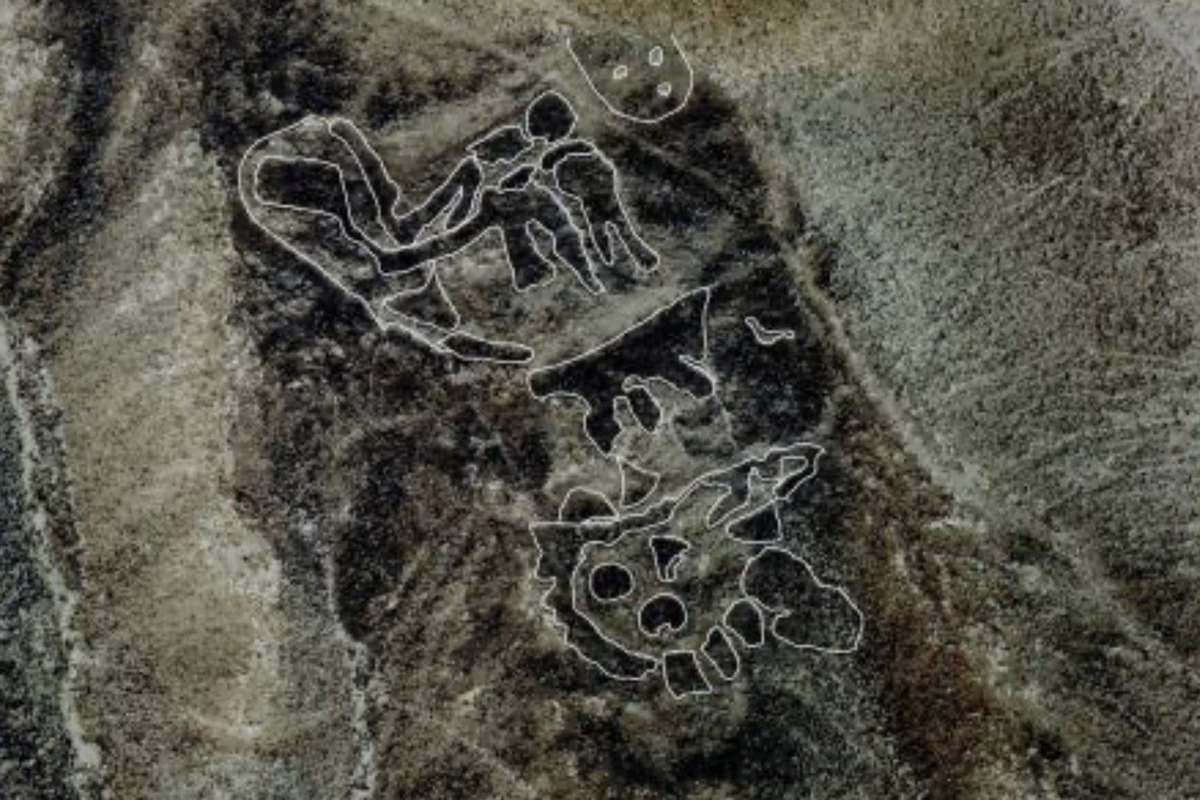Dozens of geoglyphs with feline and anthropomorphic figures found in Peru
[ad_1]

New evidence of a lost civilization has been found
Three dozen new multi-meter geoglyphs depicting feline and anthropomorphic figures belonging to a long-vanished civilization have been discovered in Peru.
In the Ica region, located south of Lima on the coast of Peru, an archaeologist from the National University of San Luis Gonzaga (UNICA) and a team of 20 students discovered 29 geoglyphs. Let us recall that geoglyphs are geometric or shaped patterns applied to the ground, usually over 4 meters in length. Some of them are so large that they can only be seen from a great height.
How reports arkeonews.net, 29 years after UNESCO declared the famous lines and geoglyphs of Nazca and Palca as cultural heritage of humanity (December 17, 1994), a new discovery with impressive figures in Ica highlights the importance of this region, which houses evidence of ancient Peruvian astronomical and religious self-expression.
The discovery was made in the El Ingenio and Changillo areas of the Ica region, which are part of the Nazca province. The geoglyphs date back to between 300 BC. and 100 AD, which, according to researchers, corresponds to the late Paracas period and the early Nazca period.
These geoglyphs depict cats and anthropomorphic figures. They were discovered during a four-month research project that was approved by the Ministry of Culture. The team was led by archaeologist and teacher at the Unica School of Archeology Omar Bendezo De la Cruz.
Omar Bendesu De la Cruz explained that the figures are located on the hillsides in the community of San Francisco in the district of El Ingenio and in the San Juan sector in the district of Changillo.
The geoglyphs were captured using a drone, and the images were analyzed using specialized software to determine the shape of the figures.
The study identified 10 geoglyphs in the El Ingenio area depicting feline figures measuring up to 17 meters in length and 12 meters in height, while in the Changillo area the team found 8 geoglyphs depicting feline figures measuring up to 37 meters in length and 13 meters in height. meters in height.
The remaining geoglyphs discovered depict anthropomorphic figures, ten of which were discovered in the El Ingenio area and one in the Changillo area.
Feline images are common in Paracas culture, including ceramics and textiles. Some researchers believe that these animals are associated with fertility and are a water deity.
The Paracas culture was an ancient civilization that flourished on the southern coast of Peru, dating back to approximately 800-100 BC. She is known for her remarkable achievements in the textile arts, especially weaving, which produced textiles with intricate designs and vibrant colors. The Paracas culture is divided into two phases: the Paracas Caves and the Paracas Necropolis. The latter is characterized by its elaborate burials and exceptional textiles.
Their influence spread through trade networks linking them with other ancient cultures such as the Chavín and Nazca civilizations. However, the decline of the Paracas culture occurred around 200 BC, possibly due to environmental changes or conflicts within the society.
[ad_2]
Source link








